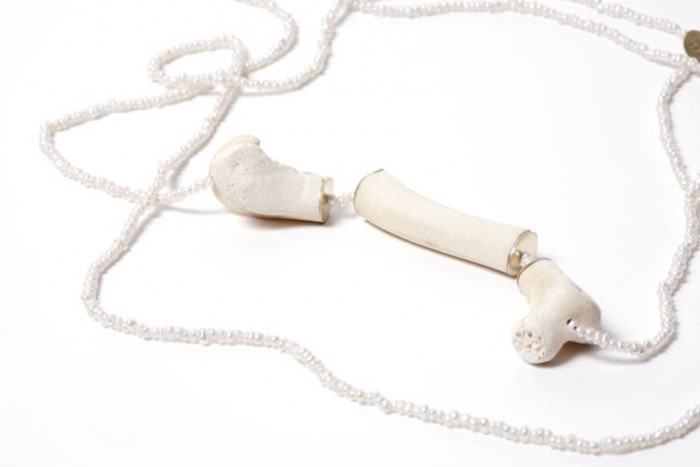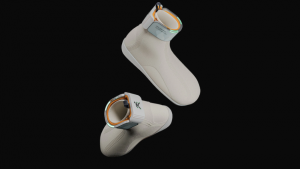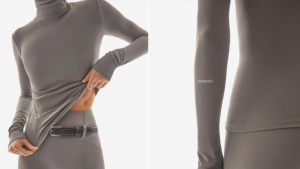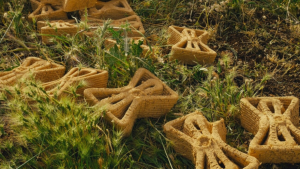
Rather then pursuing her childhood dream of a career in archaeology, Geraldine Fenn decided on a whim to become a jewellery designer. After completing her studies at the Durban University of Technology (then Natal Technikon) she set up shop in 1999 and has been making one-of-a-kind, handmade pieces ever since.
Fenn and her husband, fellow jewellery designer Eric Loubser, are active in Johanneburg's creative scene. Their shop, Tinsel, in Parkhurst stocks quirky, handcrafted jewellery by some of the country's most original designers, making it a destination for hunters of bespoke baubles.
Fenn, who helped curate the jewellery section of Design Indaba Expo for many years, clearly knows about balancing creative innovation with the demands of running a business. We chat to her about managing this juggling act, the challenges of "making it" in South Africa's design industry and her conflicted feelings about 3D printing in the jewellery industry.
What was your lucky break?
There aren’t really any lucky breaks in our industry. It’s a long hard slog to keep getting your work out there and to stay relevant with consistently good and interesting design. It’s always great to see your work profiled in magazines but ultimately, if you want your work to be taken seriously and enable you to earn a living, it’s better to focus on producing high-quality jewellery all the time and nurturing relationships with your customers.
How do you like to work and how does your workspace reflect that?
I share a studio with my husband, Eric Loubser, which is in our shop, Tinsel. It’s pretty small but has everything we need. We have to keep it reasonably tidy, since people who come into the shop can see it, but my bench is always in a state of chaos, cluttered with tools, stones, metals and other interesting bits and pieces. Even though I seem to spend way too much time hunting for things in the mess, I can’t help it – it’s how I work best. I like to keep things visible until the perfect way of turning them into jewellery presents itself.
Do you tend to come up with your best ideas on your own or when collaborating with others?
I used to work in quite a solitary way, but since I started sharing a studio with Eric (about four years ago), I’ve really enjoyed having someone there to bounce ideas off. Talking about an idea with another creative person can often take it in a new direction that you didn’t anticipate, and I like that.
How do you juggle running a successful company with being creative?
Well, success is a relative term – I’m sure we could make a lot more money by focussing more on the business side of things and doing some things differently (hiring assistants, outsourcing production etc.), but that would take us away from what we love about jewellery, which is making it. As long as we’re at the bench creating jewellery that we’re proud of and that makes our clients happy, then we’re successful. There’s always admin involved in running a company, which most creative people resent and are not very good at, but I think if you keep in mind the reasons you’re in business in the first place and the goals you want to achieve, then it’s bearable.
What are you working on right now?
I’m busy making my necklace for a big group exhibition we’re doing in November in collaboration with the Liz Loubser Gallery, 55 Artists, 55 Necklaces, and I’m also making some pieces for an exhibition in Cape Town in December, Bloom III: Seeling Eden.
What excites you most about the way the jewellery industry is changing right now?
We’re not really influenced by what happens in the broader industry, because we do contemporary, handmade, bespoke pieces rather than the mass-produced commercial stuff that is the focus of most of the traditional fine jewellery industry. At the moment the industry is moving more and more to computer-aided design and 3D printing, which I see mostly as a negative thing, since it means that old-school handworking skills are being lost. You can certainly do amazing creative things with those new technologies – and contemporary jewellers in places like Holland are doing that – but for the most part they are being used to churn out very boring, repetitive, anonymous jewellery. The positive thing about it might be that as those traditional skills get lost, people will start to value the handmade, unique piece more.
Which of your fellow designers’ work do you admire?
There are so many contemporary jewellers overseas doing amazing work – Ted Noten, Kim Buck, Julia de Ville, Victoire de Castellane, Shinji Nakaba, Helen Britton, Karl Fritsh... although I think it is easier for them because they have a much bigger audience for their work and there are more opportunities to teach in design institutions (so you don’t have to earn a living from your jewellery) or design for big luxury brands. In South Africa, I admire the work of Marchand van Tonder, Liz Loubser, Eric Loubser (obviously!), Songezo Baleni, Chris de Beer, Verna Jooste and recent graduates Kira Levy and Carla Kruger.
Which of your designs are you most proud of?
I think my best pieces are the ones I do for exhibitions because I push myself a bit harder. My favourites are earrings in the shape of bones that I carved from old ivory, with a silver fly sitting on them. I’m proud of them because I tried a new technique (with a lot of help from my friend Philippe Bousquet) and because the design is quite restrained.
What is the most rewarding thing about being a designer?
Getting to be creative every day. Sure, there are times when you have to do boring jobs you don’t want to, but for the most part you get to earn a living doing something you love.
And the most frustrating?
People who don’t get it, and ask why your one-of-a-kind handmade piece of jewellery is more expensive than a mass-produced piece of costume jewellery…
Is there an object that you use every day that you would like to redesign?
The TV remote – surely it could have fewer buttons?
What are you passionate about in your downtime?
I have a one-year old son so most of my downtime is spent with him, and I also love to read, eat chocolate, watch TV, potter around the house and occasionally do cultural things like going to watch a ballet or see an art exhibition.
In what way does your home reflect who you are as a designer?
It’s a shared space, so it reflects both Eric and I, and luckily we have similar tastes. Aesthetics are obviously important to us, and we are both passionate about local art and design. We have some awesome pieces of furniture and art by SA artists and designers. (A lot of them we traded jewellery for, which is always great because it gives a piece a story and makes it more personal).
Do designers ever retire?
Nope.
What would you like to have written in your obituary?
That I was lucky enough to have a great family, meet some interesting people, go to some amazing places, see and do some incredible things, and make a living doing something I loved.







